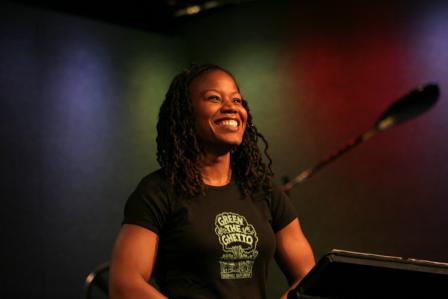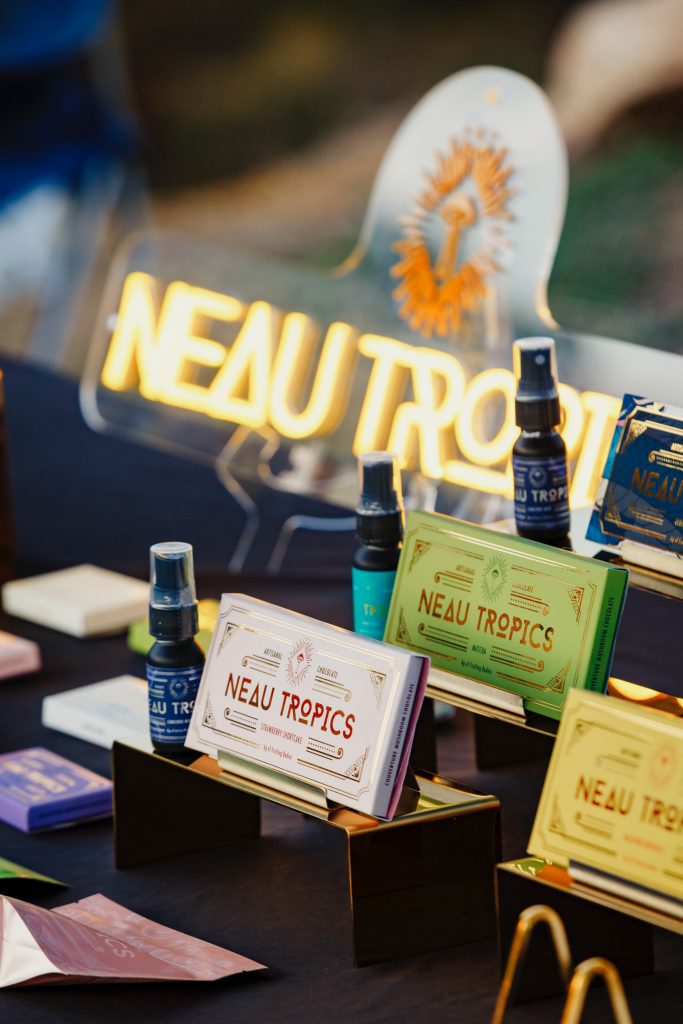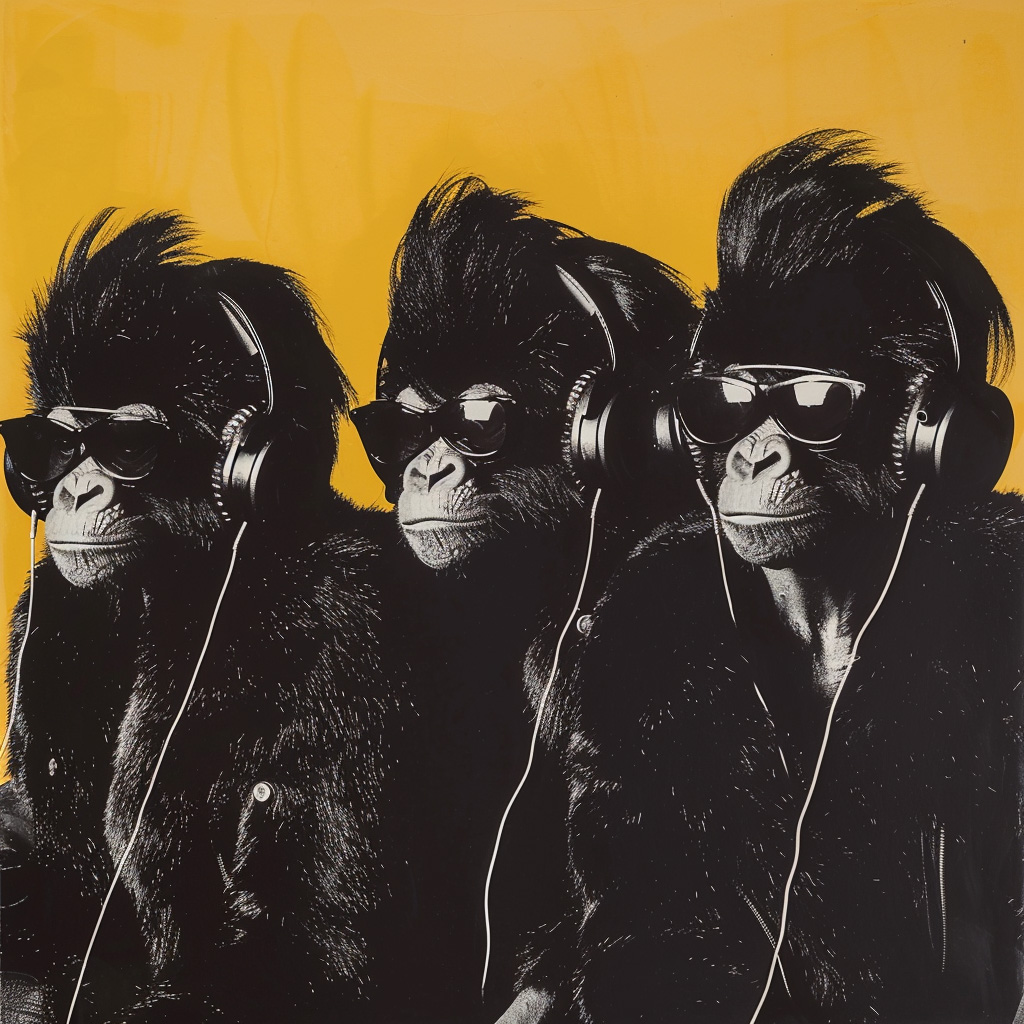Awareness of how our environment shapes our neurological, chemical, socio-economic state may seem like cutting edge social science to some, but this practice has been around for many years under different names. A current title for such awareness is Environmental Justice. As a combination of social justice and new environmentalism, Environmental Justice synthesizes some very important elements – the old and the new, intellect and intuition, contemplation and action. A separation has always existed in this country between the “haves” and the “have-nots.” Environmental Justice, like Hip-Hop, is here to help bridge this divide.
In exploring this idea, it is necessary to ask ourselves a question: Are communities that have been traditionally marginalized both economically and socially subjected to more environmental hazards than those communities nestled within enclaves of green grass and local chapters of the Rotary Club
The term has been circulating more and more since its emergence in1982 surrounding an event in Warren County, North Carolina when a group of citizens stood up against the government’s decision to dump over 60,000 tons of PCB-contaminated soil in the local landfill. Recent years has seen a groundswell within the EJ movement. Many key players have stepped to the forefront as leaders in this grassroots form of social justice, but there a few who stand out. In Oakland, human rights activist Van Jones carries the Environmental Justice banner, as does Robert D. Bullard in Atlanta. And in New York City, home to its fair share of marginalized communities and environmental problems, the most prominent figure in Environmental Justice is Majora Carter.
When some hear the name “South Bronx” their mind may reel off visions of the New York Yankees, or conjure images of the spate of fires that decimated countless buildings in the area in 1977. Others might recallthat the South Bronx is the birthplace of Hip-Hop. All are common associations made with this small region of New York City's northernmost borough. And now, it seems to me,there's another distinct “happening” occurring there, with big implications for the world at large. At the center of this is the organization that Majora Carter and her friends founded in the late 90’s – Sustainable South Bronx (SSBx).
Majora’s achievements with SSBx have garnered her a lot of attention as of late, especially following an inspiring speech delivered at last year's TED conference. During her talk, Carter boldly challenged former Vice President Al Gore, to step up his game and include Environmental Justice activists in his marketing strategies for aiding the envronment.
I sat downwith Majora in the summer of 2007 to discuss the current projects of Sustainable South Bronx, and to get her opinion on most things New York. I also found out a little about her favorite artists in contemporary Hip-Hop:
PA: I'd like to briefly go over some of the projects SSBx is working on at the moment. First, there's a program for "green collar" job placement called B.E.S.T – the Bronx Environmental Stewardship Training. You are also working on something called "Green-Roofs," which is an intiative to conserve energy and reduce sewage runoff by covering urban rooftops with plots of grass. Finally, you are involved in something with the Sheridan Expressway – is this theGreenway Project?
MC: No, there’s the Greenway Project that grew out of a$1.25 million federal transportation grant that I wrote 8 years ago now. This was a design for an 11-mile network of waterfront path for bicycles and pedestrians. Right now that plan is done, and it’s fantastic. At the moment, wehave about $20 million to begin construction for the first stage of this project. And that’s what’s happening, starting next year.
The Sheridan is a completely different project, involving the work of a bunch of local community groups and technical supporters. SSBx got involved because we discovered that the state was planning to "fix" the Sheridan Expressway, which was one of Robert Moses, “Master Builder” projects.
* * *
(At this point in the interview, I’d like to give some background on the personage known as Robert Moses. The man’s legacy in New York is monumental. As an urban planner during a span of years from the 1930s to the 1950s, Moses managed to drastically alter the landscape of New York like none who came before him – and many of these changes were not for the beter.
In his book, The Power Broker, Robert Caro lists the flaws in Moses' character. He depicts a man driven by the desire to attain as much power as possible – a genius and "go-to" guy when it came to getting things done, but more prominently, an outspoken racist whose prejudices found their way into many of the projects he was involved in.
Moses codified and cemented his prejudices into institutions such as housing projectsand expressways that perfectly fit the definition of what is described as "Institutional Racism." As opposed to one-on-one racist behavior, institutional racism reverberates through the generations and stacks the deck in an uneven fashion that leaves the "haves" with considerably more comfort, and the "have-nots" with a lot more chaos.
As a kid growing up in Long Island, spending time at Jones Beach during the summers, I remember hearing stories about how Moses designed the parkway overpasses to be too low for city bussses to clear. This was done with the aim of preventing poor minorities who were, and still are, dependent on public transport from getting to the beach. This is but one of many instances of racism that can be linked to Moses' projects. Along with the members of the New York State city planning commission, Moses vocally opposed blacks taking residence in Stuyvesant Town, a Manhattan housing development created for WWII veterans.
When it came to the building of the thirteen roadways he was responsible for, Mr. Moses consciously made sure that he steered clear of building these paths near the wealthy landowners, while he barreled through whole neighborhoods of working class people throughout Long Island and New York City. For example, the Brooklyn Queens Expressway violently tore through poverty-stricken neighborhoods along its path to making high-volume transport readily accessible for other New Yorkers. The results were devastating to many communities situated alongside the highways, with the increased traffic augmenting air pollution, and other industrial contaminants adding to create a generally toxic environment.
Towards the end of his career, Moses even attempted to build a roadway through the site where the Bronx Zoo is located. This was in the 1960s, however, and as his political clout was waning, the plan was rejected as absurd.
Moses demonstrated an allegiance towards attaining power and money by cozying up to the rich owner-class of a society that was outright racist, and most definitely elitist. And these prejudicial personal perspectives fed directly into the institutions that were created from them – making the career of Robert Moses perhaps the finest example of Institutional Racism at work.
Reflecting on Moses' legacy, I return to SSB's humble office over looking the South Bronx horizon, where out in the distance New York State has plans to build a prison in Hunts Point. This is slated for construction right here in the community Majora comes from,and it is also something that she and SSB are aggressively fighting. Their alternative is to build a recycling plant there instead.
Majora spoke with me about when the "Car became King," and the US economy started to be built around the automobile. Highways were being built at any cost, and sometimes the human cost, she mentions, was the greatest of all. There were huge displacements and uprooted communities in the wake of car culture's takeover.
As Jeff Chang notes in his book, Can't Stop, Won't Stop: “60,000 Bronx residents were caught in the crosshairs of the Cross-Bronx Expressway. Moses would bulldoze right overthem.”)
* * *
Majora continues:
One of the shadier things I’ve ever heard was that even if they weren’t planning on doing highway construction when they said that theywere going to, they would just bring a crane in and pull the top of the building off, even though they knew people were living on the lower floors. Cause what happens when there is no roof? The elements come in and completely destroy your building.
It was just such a shameful period in New York City’s history.
Bringing it back to the present time, SSBx realized thatwhat the State wanted to do was to "fix" the Sheridan Expressway, which would have jeopardized all of the Bronx river park projects we were working on, sowe were opposed. We then came up with an alternative plan that removed thehighway so that you could use that land, all 28 acres of it – something alongthe lines of community economic development, or housing, or open space. And we put together a plan that showed that there could be 650 permanent jobs createdas a result of it, another $30 million in projected wages, as well as an increase in property values. We just discovered this summer that the state has tolook at our plan the same way it looks at others, so we are really excited about that.”
So it’s been received well?
Yes – it was a fight, though. First we had to make sure the state would even review it as a viable option. It took us from the late 90s up until earlier this summer just to get them to say that they would review it. Because once it goes through that process, then you can make a determination about it. But if it didn’t make it that far, then we would have had no chance.
So that’s theSheridan…
I found this quote from you that may be related to the Sheridanthing – correct me if I’m wrong.
You said, "Understand that this is an ownership society, and if you don’t own, you don’t have rights.Working on Land agreements, for example, when SSBx gets the highway torn down, secures some land use rights."
Yeah, and I think there is a piece of that quote missing, because one question I always get is how do you use that to stop gentrification. And you do this by working with people who either own the land, orby owning a piece of it yourself. So part of this is to work with developers who have an understanding that you cando decent affordable housing. To understand that there is a viable economical supportive way to do things the right way, even as a developer, and to make sure that they have permanently affordable housing within the mix of their developments. The other piece is community land trusts.
Is that related to the website Policy Link?
Yes, that’s right.
So, you also are working on the Solid Waste and EnergyProject. Explain what this is about.
We have beena part of campaigns since I started SSBx. The goal is to create a more effectiveand more equitable solid waste management for the city of New York.
The role that we play is in making sure that we do a bunch of the research that makes it move to the point that folks in the neighborhood know what’s going on. That’s why we’re connecting with other community groups, and it’s actually a really fascinating process. To date, we’ve done pretty well. The mayor adopted our plan that every borough should handle it’s own waste, which is the crux of it.
Even Manhattan?
Oh yeah. Guess what? Manhattan is really resistant, particularly the Upper East Side and the area in Tribeca. It’s what they are not saying, actually, that I find most repellent: "Real Estate Values are really high; there is already a park there; all the sites down there were used as waste facilities before real estate values across the street got really high."
What they want to build now in Tribeca is this amazing state of the art recycling facility – if we had those things [in the South Bronx] we never would have started speaking here about how miserable the system works. We would like one of these facilities in our neighborhood. I’d be very honored. It’d be so cool that you can actually take school kids through it to show then how we recycle our waste. We don’t do that here.
Manhattan needs to recognize that they produce more wastethan any other borough. It’s a fight, but we’ll get it.
Does SSBx have a plan to ensure more up-to-date waste transfer stations?
Yeah, that’s what our plan calls for. We already recognize that the mistakes of the past don’t need to be revisited on wealthy people, anymore than we want them revisited on poor people. The point is that the situation has to change for everybody.
If you continually have places like the South Bronx where you put the bad things that nobody else wants to deal with, then you’re adding to the collective failures that we all make. For instance, if you continuously create repositories for waste then there will be public health impacts. To have to deal with not just the public health impacts,but also the knowledge of knowing that your community is used as a garbage dump, does add a psychic weight to what the people here already deal with everyday.
So when you talk about building a 2,000-bed jail here, what are you trying to say to folks in our community? Consider that, along with all we now knowabout how pollution affects communities. There is a direct relationship between various types of pollution, from fossil fuel emissions and brain damage in kids along with the activation of a gene that produces obesity. That’s the stuff coming out.
I don’t expect the powers that be to give a crap about communities like ours. Which is why we spend a lot of time talking about money. If you really look at the value of what it’s going to cost to care for such an environmentally-ravaged community, and all the public health costs associated, along with the social costs associated with it, and add that up, it’s going to cost you a lot more than trying to clean up the mess that we have collectively made.
And that's the triple-bottom line that you speak of.
Yes, exactly. That’s why working on the B.E.S.T.program is so cool. Especially when you're talking about folks who are really poor. They’ve been marginalized from the more traditional ways of making a living.
With unemployed or underemployed people, you want to make sure that they understand the causality between their actions and the environment, and I think the best way to that is helping them understand the links between their personal and financial well-being. Clean up your environment, and you are getting paid for it. That’s why B.E.S.T. is our single biggest program.
What has been the response to the BEST program? Are kids in the community taking to it?
Yes, especially since we’ve been able to hire some folks to go out there and teach people. We hired them to be "Green Way stewards" so they are heralding the coming of the Greenway. There are just two of them right now, but they’ve taken on various projects in the neighborhood. They do particular street planning projects or care projects. And they did this project called "The Green Line Project," where they painted this green line that leads pedestrians down to The Hunt’s Point Riverside Park, which SSBx was integral in building.
So they do projects like that to connect people to the fact that they are doing some things to take care of the environment. And that’sbeen an incredible success. People ask what we are doing, and we tell them.
How can people start a Green Roof installation company?
It’s hard. We have been working on it for four years. At this point there is no market for it, because it is more expensive than a more traditional roof. People see the value in it, but because it’s still considered a niche market, the prices are that much more expensive.
I’m actually putting a Green Roof on my house, because I realize that what I’ll spend on the green roof will end up being more affordable.
Are there any other communities that have contacted about starting their own versions of SSBx?
Yes, a lot. In Philadelphia there is a group called TheAmerican Cities Foundation that works with a bunch of different groups around Philly. I think they are amazing, and I totally bonded with them. I’m probably going to be on a task force in Newark to help Cory Booker, because he’s just trying to green up the town there.
We also work with folks in Oakland, people like Van Jones – he’smy West Coast partner in a lot of ways. I call him my little brother. He’sjust amazing. And we’ve done some work in Biloxi, after the flood.
What we are trying to do is actually create our own case studies, so folks can take them and replicate them. We get so many requests, and I’m so honored, but we’re not set up enough yet to help them. So we are thinking of setting up a consulting arm, for people who can afford to pay, and there are plenty of people who can. Also, we want to make sure that we have some sort of step-by-step guidelines for people who are in the same situation we are in right now. Some poeple just need to know about good management practices that they can incorporate in their own communities.
The South Bronx is the birthplace ofHip-Hop, and it was born here nearly 35 years ago. I'm curious – what Hip-Hop artists are you into right now?
I like Common. Mos Def is cool, I like him. When I was a kid I went to the jams. They were in everybody’s backyard. Sugarhillwas going on then, RUN-DMC, Grandmaster Flash. All those guys.
* * *
After the interview, I went outside to check out the Green Line on the sidewalk. I had no pressing engagements for a few hours, so I decided to follow this line to the end.
Solid, the way a newly painted surface looks, a foot in width, and seemingly going on forever, the Green Line led me through the South Bronx. I walked past a baseball field and some basketball courts outside of what looked like a new recreation center, where mothers walked with children and some people chilled on the fence drinking beer from their brown paper bags, smoking cigarettes.
I walked through some zones of residential houses, where the block was quiet, yet in full swing of life. Some bachata music blasted out of radio speakers propped up against open windows above. Kids were riding their bikes, some cats were hanging around a car talking. My mind oscillated between thoughts about SSBx’s mission here in theBronx, Environmental Justice in general, and the snippets of passing conversations I was hearing as I continued down this long Green Line.
I also thought about Hip-Hop and its roots here in the South Bronx, where it all started. I ruminated upon the significance of SSBx as an extension of Hip-Hop culture – a connection that may stand out more in my mind than in Majora’s or anyone else in her organization. Yet it's a significance that I feel needs to be acknowledged.
Hip-Hop culture, as stated by its Godfathers Kool Herc, Grandmaster Flash, and Afrika Bambaataa, is all about helping your community. And one of the core tenets to The Universal Zulu Nation, which was started by Bambaataa, stresses the importance in cleaning up our environment. On these same streets I was now walking, numerous heads had walked before me – on their way tosome jam that any of the three Godfathers had put together, thirty years earlier.
SSBx is an organization prophesied by Bambaataa, whose vision (or maybe epiphany) was to create something that went way beyond the block. Hip-Hop has circled the world like nothing ever before it … and it all started right here!
Bambaataa, infused with a demeanor of some extra-terrestrial shaman, has diligently worked to unite people. I nominate Afrika Bambaataa for a Nobel Peace Prize, and in a more just world, a world more open to the youth culture than it claims to be, Bambaataa would have received such a prize long ago. (Maybe around the time "Planet Rock" came out, 'cause that song is still the shit!)
Personally, I see Majora within the lineage of Bambaataa. If she and the rest of SSBx are able to accomplish only half of what they are setting out to do, the implications can be massive. We all have the opportunity to help set the template for how certain inner city ecological standards will be set, so everyone can lead a more healthy existence -not just rich white people.
This is not a zero-sum game. We are now at the point, I tend to believe, of what Bucky Fuller stated as "Utopia or Oblivion." We need people like Majora right now, just as much as we need Bambaataa. And as thoughts cascade and capture one’s attention in ways that make what’s directly in front of you soften and become muted in volume, the world around me faded as I thought these things, until I eventually found myself approaching a park on the water.
The Green Line led me to this nice spread of green grass where a girl’s soccer team was practicing their drills, and a few people walked lackadaisically along the perimeter of the field.
The sun was slowly setting behind some clouds to the west, yet the light around us had not yet shifted to twilight. The evening chill had not really set in. And the moment I found a spot to relieve my bladder, and my jaw unclenched, I took a breath and looked at what SSBx had created, and it was good. It was more than a park on the water.
I had just spent forty minutes walking through an industrial area. I walked past a huge, smelly sanitation lot, where garbage trucks spit and sputtered their noxious fumes. I walked past numerous car repair shops and some apartment houses, to finally find myself here at this park on the water in the South Bronx. And that was more than good.
Around the fringes of this greenspace was a small dock where some local fishermen stood with their rods sweeping around the surface of the bay. I approached and began to make small talk with two of them. A woman was painting in acrylics a picture of the dock we all stood upon as I spoke with the fisherman about the City and Puerto Rico, about health care and the South Bronx, and the sun began it’s westward descent. The water lapped against the bottom of the dock and we all looked over its vast expanse as we spoke.
As I always do, I tried to gauge where exactly we were, and they did their best to help me figure this out. Manhattan was in the distance in front of us, Rikers Island was to the left, The Cross-Bronx Expressway was out to the right, and so on.
I hung around and spoke with one of these guys for maybe an hour on this New York summer day in the South Bronx, both of us engaging in the fine art of being human. And we had the Sustainable South Bronx to thank for that.
Then as the sun set, I left and wentback to my car to deal with the crazy amount of traffic on the highway – and I have Robert Moses to thank for that!
Image credit: Robert Moses image "Sponsor of Battery Bridge" obtained via Library of Congress, under "fair use" permissions.















